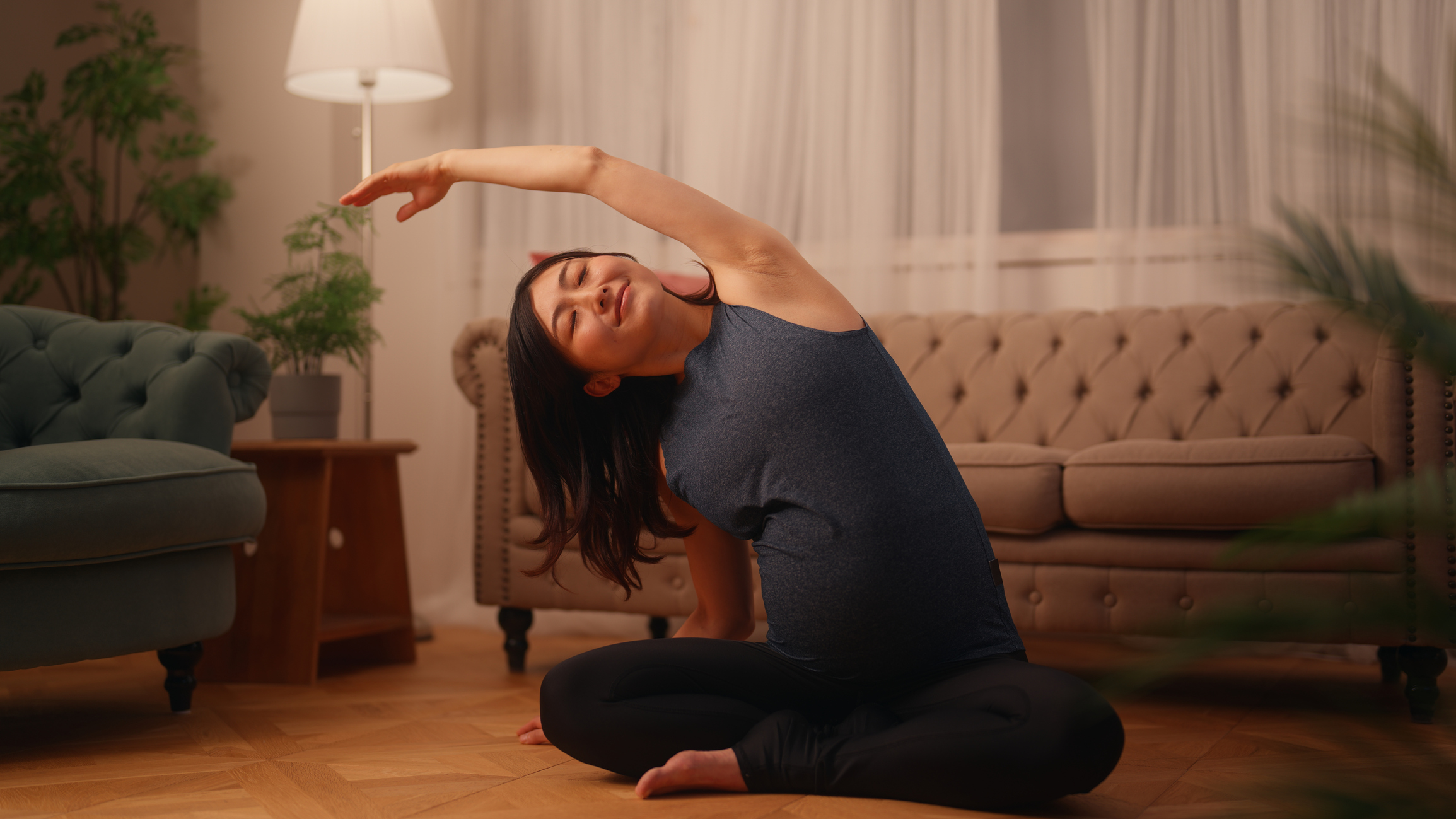I tried this PT's go-to stretches for a better night's sleep—here's what happened
A few minutes of Kayla Itsines' favorite bedtime stretches loosened me up ready for a restful night

If you're one of the 15 million Instagram followers of Kayla Itsines, the Australian trainer who co-founded the Sweat fitness app, you'll know all about her high-intensity and strength-based workouts.
But recently Itsines switched things up by posting a rest and recovery routine featuring her "go-to stretches for a better night’s sleep". I was curious to try the stretches to see if they worked for me.
How to do Kayla Itsines' bedtime stretching routine
A post shared by KAYLA ITSINES (@kayla_itsines)
A photo posted by on
A stretching routine like this is not only good for sports recovery, it can also help the whole body relax in just a few minutes, so it's worth trying if you have trouble sleeping too.
This routine consists of seven movements or stretches and should take less than seven minutes to complete, so chances are you’ve got time to fit it in before you get under the covers.
The stretches are dynamic and a few involve moving between a pair of moves, not just holding static stretches.
Itsines does the following for 30 or 60 seconds each. Adjust the timing to your capacity and level.
- Hip flexor to hamstring stretch
- Abs to child's pose
- Alternating lat stretch
- Adductor stretch
- Knee to chest
- Lying thoracic rotation
- Hamstring stretch
What happened when I tried Itsines' bedtime stretch routine?
I tried the routine after a long day when I was feeling stiff and tired. I had to psych myself up to get onto my mat in such a sluggish state, but it was worth it. It felt good to move in and out of the stretches, rather than holding static poses.
Start your week with achievable workout ideas, health tips and wellbeing advice in your inbox.
The hip flexor to hamstring stretch warmed my legs up and gave me a satisfying stretch in the front of the hips. I enjoyed pairing the abs stretch with child's pose, and it released stiffness in my lower back that I hadn't noticed had built up during the day. It felt great to stretch out my sides during the alternating lat stretch, which also stretched the soles of my feet—this was pleasant at first but as the end of the minute approached I had to untuck my toes as it was getting too intense.
After all that movement I enjoyed sitting for a moment in the adductor stretch (butterfly pose for any yogis) and open my hips to the sides, which felt like it undid all the tightness from sitting at my desk during the day.
Knee to chest further eased the tension in my lower back and hips, plus my hip flexor on the straight leg got a nice stretch. The lying thoracic rotation felt more like hip circles and they gave my lower back a bit of a massage.
For the hamstring stretch, I went for a wide-legged version instead of Itsines’ legs together, as this felt more comfortable and I was able to relax more deeply into the stretch.
After the routine, I felt noticeably looser and more relaxed. My hips and lower back seemed to appreciate these stretches the most, and that's probably where I was holding the most tightness.
Focusing on the stretches and following the routine felt mindful and relaxing, which was a surprise benefit. I had none of the usual worries crowding in as I tried to sleep and I was ready to nod off.
Although I didn't fall asleep immediately, I did sleep better than usual and woke up feeling well-rested. I’ll certainly try this routine again when I’m in need of some R&R.
Camilla Artault is a fitness writer with a passion for running and yoga. She interviews experts and writes about a wide range of topics for Fit&Well encompassing health, fitness and nutrition.